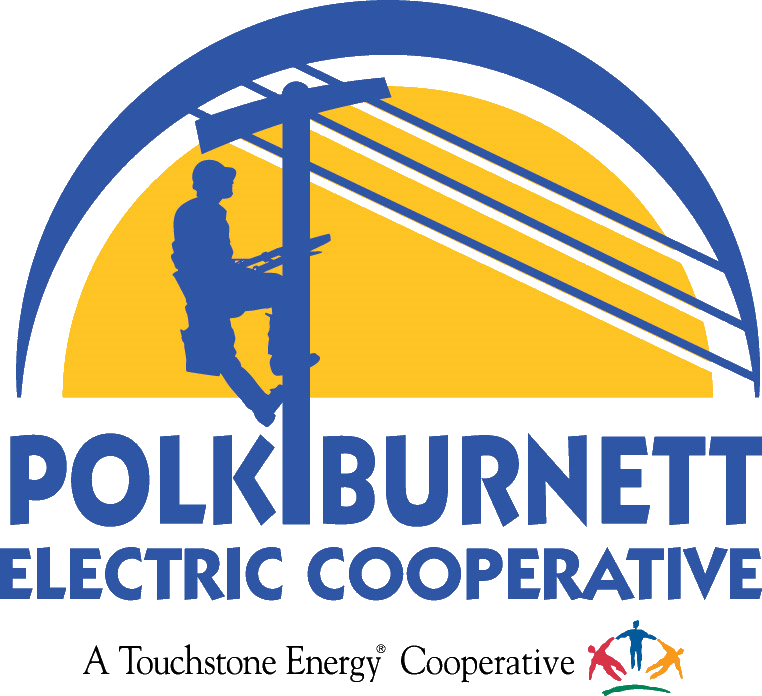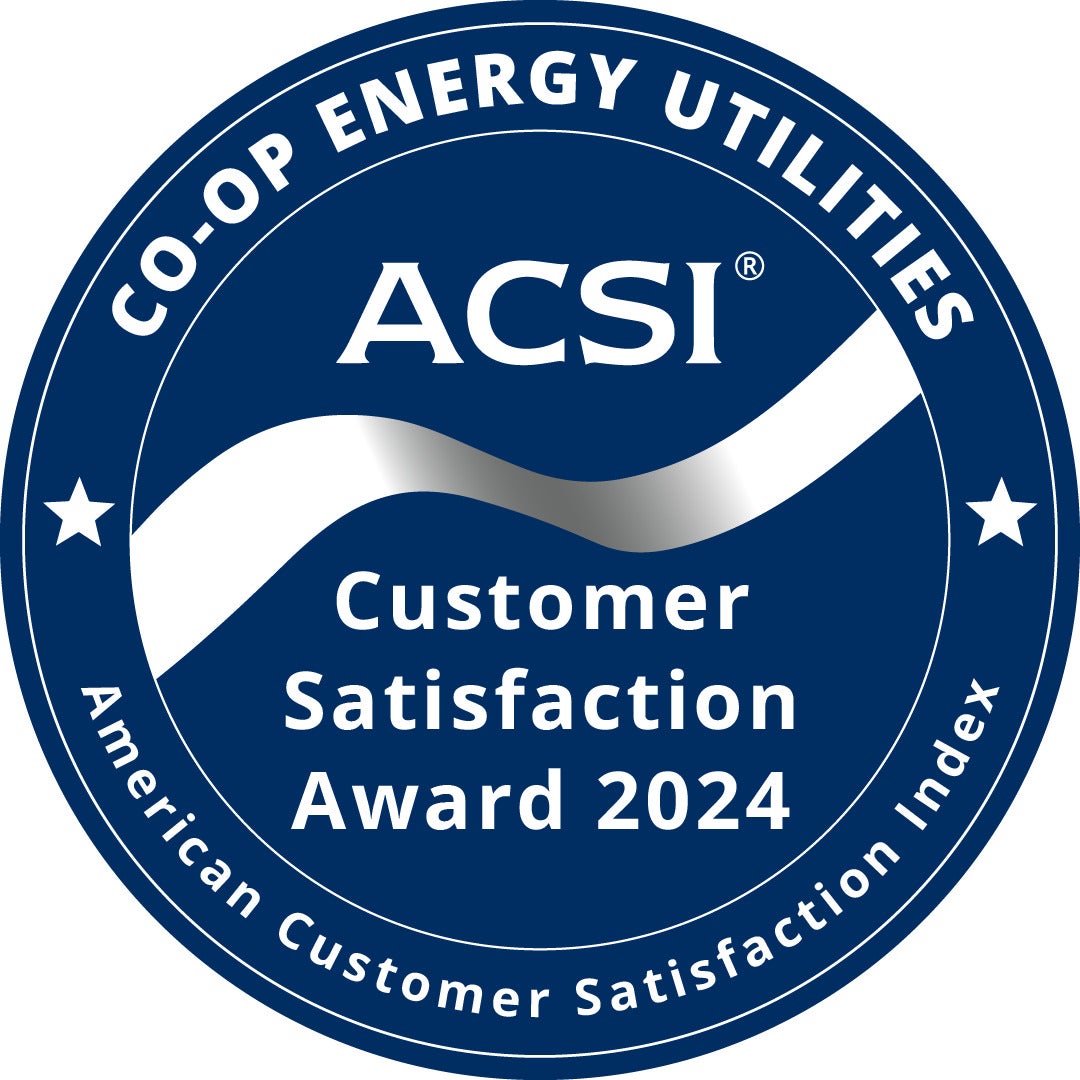- To provide reliable service
- Polk-Burnett's major cause of power interruptions and outages are trees and vegetation that come in contact with power lines.Trees or brush that touch electric lines create short circuits that cause your lights to blink, clocks to be interrupted, and computerized devices to lose information. When a major storm occurs, the number of trees that need to be removed from the power lines can cause outages to last much longer than they would otherwise.
- Polk-Burnett's major cause of power interruptions and outages are trees and vegetation that come in contact with power lines.Trees or brush that touch electric lines create short circuits that cause your lights to blink, clocks to be interrupted, and computerized devices to lose information. When a major storm occurs, the number of trees that need to be removed from the power lines can cause outages to last much longer than they would otherwise.
- To control the cost of service
- Clearing of power lines is one of Polk-Burnett's largest expenses. It is one of the reasons that Polk-Burnett's fixed charges are higher than those of neighboring utilities that have many more customers per mile of line and, as a result, less clearing cost per customer. By permanently removing trees and tall shrubs from the rights-of-way, the ongoing cost of clearing activities is significantly reduced.
- Trees and brush interfering with power lines raises costs in other ways. It takes longer for line crews to find problems and make repairs if they cannot see or get to problems. Also, trees and brush that touch power lines actually waste electricity by providing a path for it to flow into the ground.
- To protect people and property
- A spark from trees and brush touching power lines can cause fires — especially during dry conditions. The same trees that you might want to protect from cutting can become the ignition source of a forest fire that might also threaten your home or cabin.
- Since trees and brush contain water, they can conduct electricity. If those trees or brush touch high-voltage wires, they are subjected to voltages of up to 7,200 volts. If the tree conducted even a fraction of that energy, it could be fatal to someone touching that tree or to a child climbing in the tree.
To meet our goal of providing reliable power, Polk-Burnett modified the clearing program in 1997 for its nearly 2,100 miles of overhead distribution line. The program calls for a standard clearing width of 40 feet (20 feet on each side of the line) for overhead distribution lines and 20 to 30 feet in maintained yard areas.
This is necessary for several reasons:
- Costs are reduced if trees and brush can be maintained at such a distance that clearing is not needed again for at least five years.
- Service reliability is improved if trees and brush are far enough away from lines to prevent any possible contact.
- Work crews need adequate access to the power lines to conduct repairs quickly and safely.
Only primary, high-voltage overhead distribution lines serving Polk-Burnett members are cleared. Primary lines are the main lines that supply power to the transformer that serves your property.
If you have overhead electric service, transformers can be identified by looking for the large can near the top of the pole close to your property. The line from the transformer to your service location is the secondary or service wire. Trees and brush are trimmed when they are in contact with the secondary lines or when requested by the member. Secondary lines are insulated and are not considered high voltage for purposes of right-of-way clearing.
Before any primary line work is done on your property, you will receive a notification that a contractor will be in the area doing routine right-of-way maintenance under power lines. If the contractor determines that a tree needs to be removed or requires extensive side trimming, the contractor will contact you before major work begins. If you have further questions about right-of-way maintenance, please contact our right-of-way department at 800-421-0283, ext. 389, or email.
Generally, all standing vegetation within the designated clearing zone will be removed. Even brush and shrubs that will not grow to the height of the lines will need to be removed to provide line crews with adequate access to the line for inspection and maintenance.
To accomplish our goal of providing reliable electric service, Polk-Burnett will not trim trees to grow around the lines. Trees need to be removed if any portion of the trunk is located within the clearing zone, which is 20 feet on each side of the primary line except, at Polk-Burnett’s discretion, in maintained yard areas where the clearing zone is either 10 feet on each side for single-phase lines or 15 feet on each side for multi-phase lines.
Healthy trees outside the clearing zone are trimmed if their branches encroach into the cleared area. Also, trees located outside of the clearing zone that are dead, dying or leaning toward the lines will be removed if they are a threat to primary overhead lines.
Trees from which fruit is harvested annually such as apple and plum trees will be pruned in a “V” shape away from the lines to obtain proper clearance from the power line. This does not include species such as pin cherry, choke cherry or flowering crab trees.
Polk-Burnett's planting guidelines can help you determine where to plant trees and shrubs to avoid becoming a hazard to power lines.
Any trees or shrubs planted within 15 feet on either side of the lines in maintained yard areas or within 20 feet on either side of the lines in other areas will be removed during the next clearing cycle. In addition, any vegetation remaining within the cleared area is at continuous risk for damage, without compensation, if the lines must be accessed for operation, maintenance or replacement.
Wood that is large enough for firewood or sale by the owner can be cut to 100-inch lengths upon request and will be left for the owner’s use. Smaller debris is generally spread or piled along the cleared area where it is then mowed into a mulch and left in the right-of-way, with the exception of yard areas.
The co-op is converting some overhead power lines to underground where it makes sense geographically and financially. The cost of running lines underground for our entire system is prohibitively high. You and all Polk-Burnett members already have a significant investment in the existing overhead system.
Polk-Burnett will only consider cutting down trees that threaten the integrity of the electric system. When a member requests to have a tree(s) trimmed or removed, a Polk-Burnett employee from the right-of-way department will visit the location to determine if the tree is a danger to Polk-Burnett's facilities and if it can be taken down safely. Polk-Burnett will not cut down a tree if there is any danger of it falling on a structure or causing any kind of damage to the member’s property (buildings, landscaped areas, permanent yard ornaments, etc.). If this is the case, we can schedule a time to have the power line dropped, free of charge, while your tree contractor performs your work. Clean up of debris and site restoration is the responsibility of the member.
Yes. If a member calls to have trees trimmed away from power lines, Polk-Burnett will perform this work at no charge when a crew is in the area and as time permits. Clean up of debris and site restoration is the responsibility of the member.

